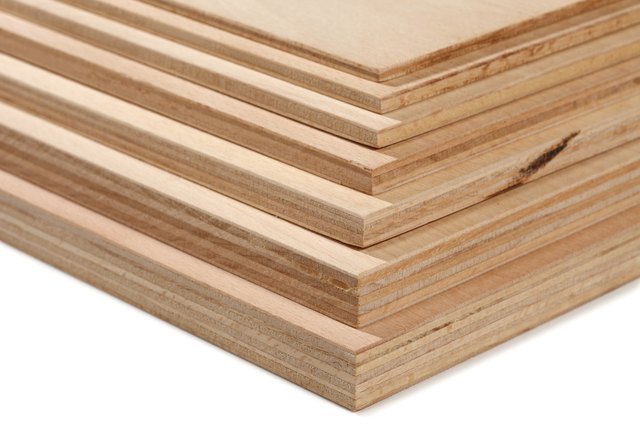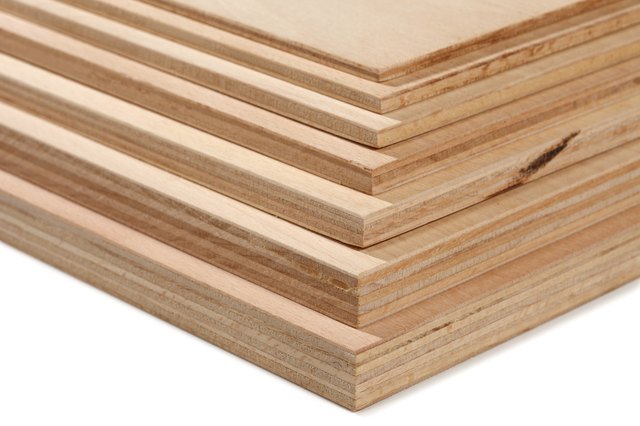Looking to find out how much heat plywood can withstand? Well, you’re in the right place! In this article, we’ll dive into the fascinating world of plywood and explore its heat resistance capabilities. So, if you’re curious about whether plywood can handle high temperatures or if you’re thinking of using it for a project that involves heat, keep reading!
Plywood is a versatile material that is commonly used in construction and various DIY projects. But have you ever wondered what happens to plywood when it’s exposed to extreme temperatures? Can it handle the heat? These are important questions to consider, especially if you’re planning to use plywood in applications where it may come into contact with heat sources.
Heat resistance is a critical factor in determining whether plywood is suitable for certain projects. In this article, we’ll uncover the limits of plywood when it comes to heat and discuss the factors that can affect its performance. So, let’s jump right in and explore the world of heat-resistant plywood together!
Plywood is a versatile material, but it has limitations when it comes to heat. While it depends on factors like thickness and quality, plywood typically begins to degrade around 150-170°C (300-340°F). Excessive heat can lead to charring or even combustion. It’s important to take precautions and use appropriate insulation or fire-resistant materials in high-temperature applications. Understanding the heat resistance of plywood ensures the longevity and safety of your projects.

How Much Heat Can Plywood Take?
Plywood is a versatile building material commonly used in construction, furniture-making, and interior design. One important factor to consider when working with plywood is its heat resistance. Understanding how much heat plywood can tolerate is crucial for ensuring its longevity and safety. In this article, we will explore the heat resistance of plywood, factors that affect its performance, and tips for proper usage.
The Science behind Plywood’s Heat Resistance
Plywood is made by layering thin sheets of wood veneer together with an adhesive. The adhesive used, known as the glue line, plays a crucial role in determining the heat resistance of the plywood. Different types of glues have different melting points and resistance to heat. The most common types of glues used in plywood production are urea formaldehyde (UF), phenol formaldehyde (PF), and melamine formaldehyde (MF). Of these, PF glue is known for its high heat resistance.
Additionally, the arrangement of the wood veneer and the thickness of the plywood can also affect its heat resistance. Plywood with thicker veneer layers tends to have better heat resistance compared to thinner ones. Similarly, the direction of the wood grain in the veneer layers can impact heat resistance. Plywood with the grain of adjacent layers running parallel to each other offers higher resistance to heat.
Heat Resistance of Different Types of Plywood
1. Exterior Grade Plywood:
Exterior grade plywood, also known as WBP (Water and Boil Proof) plywood, is specifically designed to withstand exposure to outdoor elements, including heat. It is made with phenolic glues, which provide excellent heat resistance. Exterior grade plywood can tolerate temperatures ranging from -20°C to 60°C (-4°F to 140°F).
2. Interior Grade Plywood:
Interior grade plywood is designed for interior applications with controlled environments. It typically uses urea formaldehyde or melamine formaldehyde glues, which have moderate heat resistance. Interior grade plywood can withstand temperatures up to 50°C (122°F).
3. Marine Plywood:
Marine plywood is a type of plywood specifically designed for use in water-based environments, such as boat-building or aquarium construction. It is made with phenolic glues and is highly resistant to heat and moisture. Marine plywood can withstand temperatures up to 70°C (158°F).
Factors Affecting Plywood’s Heat Resistance
1. Duration of Exposure:
The longer plywood is exposed to heat, the greater the chances of damage. Prolonged exposure to high temperatures can cause the glue to deteriorate, resulting in delamination and weakened structural integrity.
2. Surrounding Environment:
The external environment in which plywood is used can impact its heat resistance. Plywood used in areas with high humidity or extreme temperature fluctuations may experience increased stress and accelerated degradation.
3. Insulation and Ventilation:
Proper insulation and ventilation play a crucial role in preventing excessive heat buildup that can affect plywood. Ensuring adequate airflow and insulation can help regulate temperature and reduce the risk of heat damage.
Tips for Using Plywood in High Heat Environments
1. Choose the Right Type of Plywood:
Select a plywood grade that suits the requirements of your project. For applications exposed to high temperatures, opt for exterior grade or marine plywood with phenolic glues for optimal heat resistance.
2. Apply Heat-Resistant Coatings:
If you need to enhance plywood’s heat resistance further, consider applying heat-resistant coatings or sealants specifically designed for wood. These coatings can provide an additional protective layer against heat and improve the longevity of the plywood.
3. Maintain Proper Ventilation:
Ensure proper ventilation in areas where plywood is used, especially in spaces like kitchens or industrial settings. Good airflow can help dissipate heat and reduce the chances of heat damage.
How to Gauge the Heat Resistance of a Plywood
The heat resistance of plywood can vary depending on its composition and intended usage. To determine the specific heat resistance of a plywood sheet, it is recommended to consult the manufacturer’s specifications and certifications. These documents provide detailed information about the maximum temperature limits and other relevant heat-related properties of the plywood.
Common Issues with Plywood Exposed to High Heat
When plywood is subjected to high heat, several issues may arise. These include:
1. Delamination:
Prolonged exposure to heat can cause the glue between the veneer layers to weaken or break down, leading to delamination. This results in reduced strength and structural integrity of the plywood.
2. Warping and Buckling:
Excessive heat can cause plywood to warp, buckle, or deform. This can be particularly problematic in applications where precise dimensions and shape are crucial, such as cabinetry or woodworking projects.
3. Loss of Strength:
Heat exposure can cause the wood fibers within the plywood to degrade, leading to a loss of strength. This can compromise the safety of structural applications and increase the risk of failure.
Why Plywood’s Heat Resistance Matters
Understanding the heat resistance of plywood is essential for choosing the right material for specific applications. Plywood that cannot withstand the required temperatures can lead to premature failure, compromised structural integrity, and safety hazards. By considering the heat resistance of plywood, builders, designers, and homeowners can ensure the longevity and performance of their projects.
Key Takeaways: How Much Heat Can Plywood Take?
- Plywood can withstand temperatures up to 220 degrees Fahrenheit.
- At higher temperatures, plywood may start to warp or char.
- It is important to consider the grade and quality of the plywood when assessing its heat resistance.
- Using fire-resistant treatments or coatings can help improve plywood’s heat resistance.
- Plywood should not be exposed to direct flames or prolonged high heat.
Frequently Asked Questions
Curious about the heat resistance of plywood? We’ve got answers to your burning questions!
1. How does plywood handle heat?
Plywood has natural resistance to heat due to its layered construction. The adhesive used in the manufacturing process can withstand high temperatures, making plywood suitable for various applications. However, the heat resistance of plywood can vary based on factors such as the type of adhesive used and the thickness of the wood layers.
It’s important to note that while plywood can handle moderate heat, prolonged exposure to extreme temperatures can cause it to lose its structural integrity. Therefore, it’s essential to consider the specific heat resistance requirements for your project and select the appropriate type of plywood accordingly.
2. Can plywood be used near heat sources?
Yes, plywood can be used near heat sources, but caution must be taken to ensure safety and maintain the integrity of the wood. When using plywood near heat sources such as fireplaces or stoves, it’s essential to install proper insulation or heat barriers to protect the wood from excessive heat exposure.
Additionally, it is advisable to choose plywood with a higher heat resistance if it will be in close proximity to heat sources. Consulting with a professional or referring to the manufacturer’s guidelines will provide you with the specific heat resistance ratings and recommendations for plywood usage near heat sources.
3. What temperature can plywood withstand?
The exact temperature plywood can withstand depends on various factors such as the type of wood, adhesive used, and thickness. Generally, plywood can handle temperatures ranging from 200 to 300 degrees Fahrenheit (93 to 149 degrees Celsius) without significant damage.
At higher temperatures, plywood may start to lose its structural integrity, which can lead to warping, delamination, or charring. If your project requires plywood to withstand exceptionally high temperatures, it’s advisable to opt for specialized heat-resistant plywood or consider other materials specifically designed for such applications.
4. How can I increase the heat resistance of plywood?
To increase the heat resistance of plywood, several steps can be taken. Firstly, you can choose plywood that is specifically manufactured for high-temperature applications. These types of plywood are designed to withstand higher temperatures than standard plywood.
Additionally, applying heat-resistant coatings, varnishes, or sealants to the plywood surface can enhance its tolerance to heat. These protective layers act as barriers, preventing direct heat exposure and increasing the plywood’s overall resistance.
5. Can plywood be used for outdoor applications in hot climates?
Yes, plywood can be used for outdoor applications in hot climates, but it’s important to consider certain factors. High temperatures combined with prolonged sun exposure can cause plywood to degrade over time. The layers may start to separate, and the wood can become brittle.
To ensure the durability of plywood in hot climates, it’s advisable to choose high-quality, exterior-grade plywood made with water-resistant adhesives. Proper sealing and regular maintenance, such as staining or painting, can also help protect the plywood from the damaging effects of heat and moisture.

5 Mistakes Buying Plywood – Don’t Waste Your Money!
Summary
So, how much heat can plywood take? Plywood can withstand high temperatures up to 200 degrees Celsius without significant damage. However, it’s crucial to note that prolonged exposure to heat or direct flames can cause the plywood to char, weaken, and eventually catch fire.
To protect plywood from excessive heat, it’s important to apply fire-resistant coatings or use fire-rated plywood. It’s also vital to keep plywood away from open flames or high-heat sources to prevent any potential hazards. So, remember to handle plywood with care and always prioritize safety when it comes to heat exposure.
